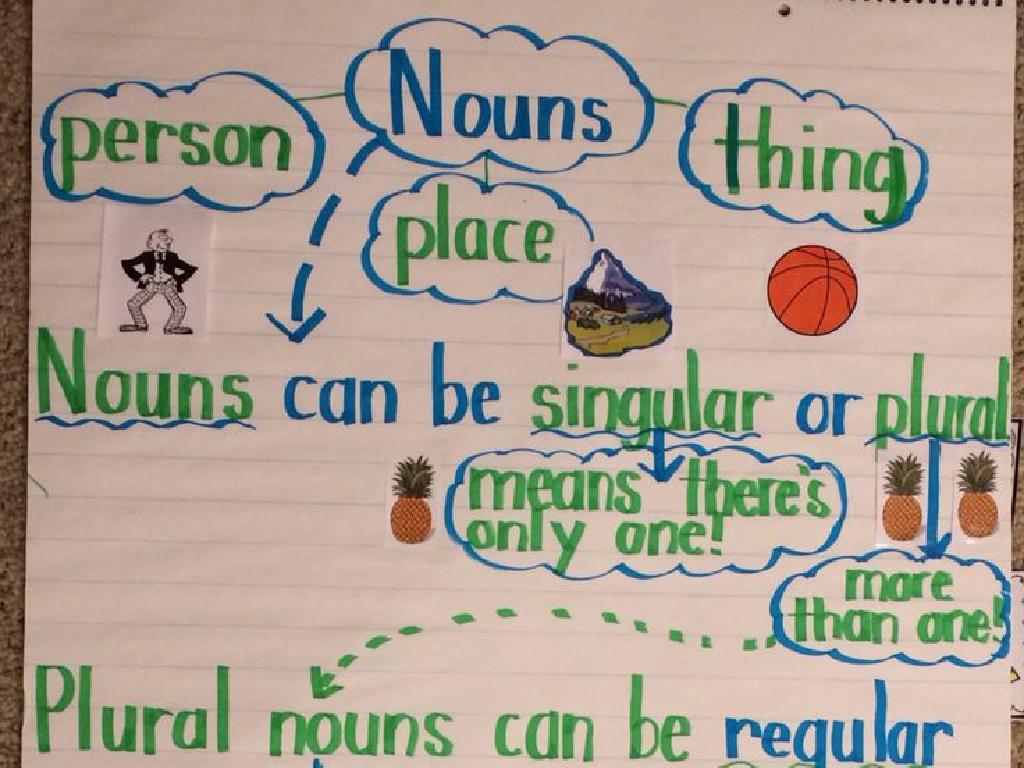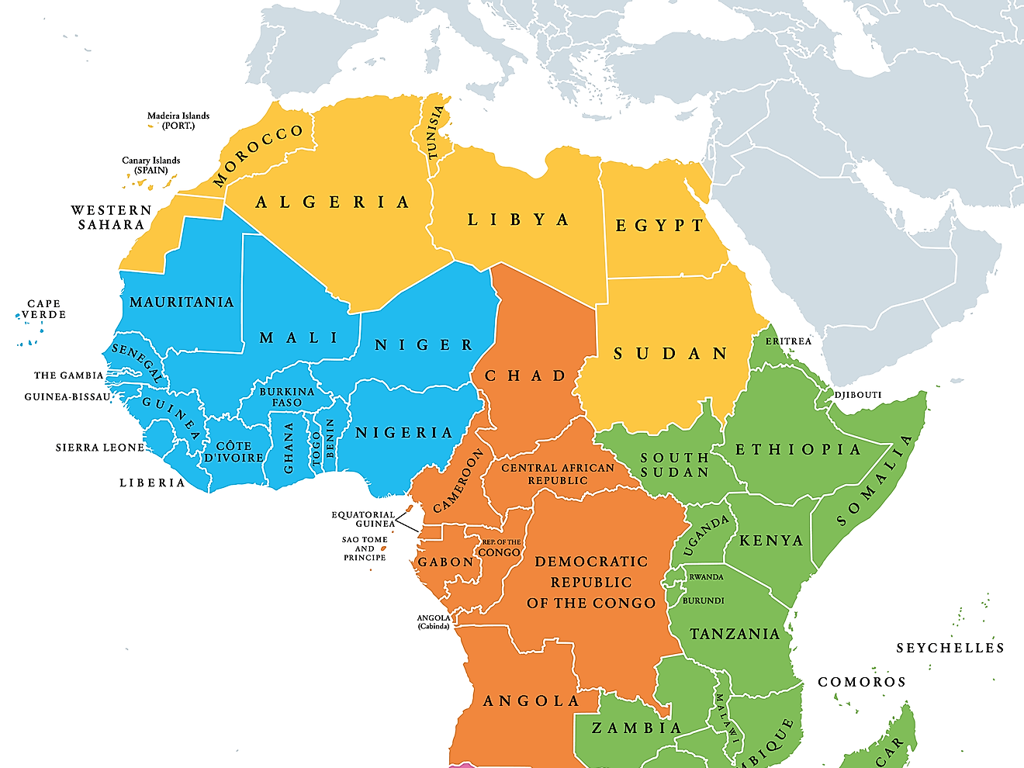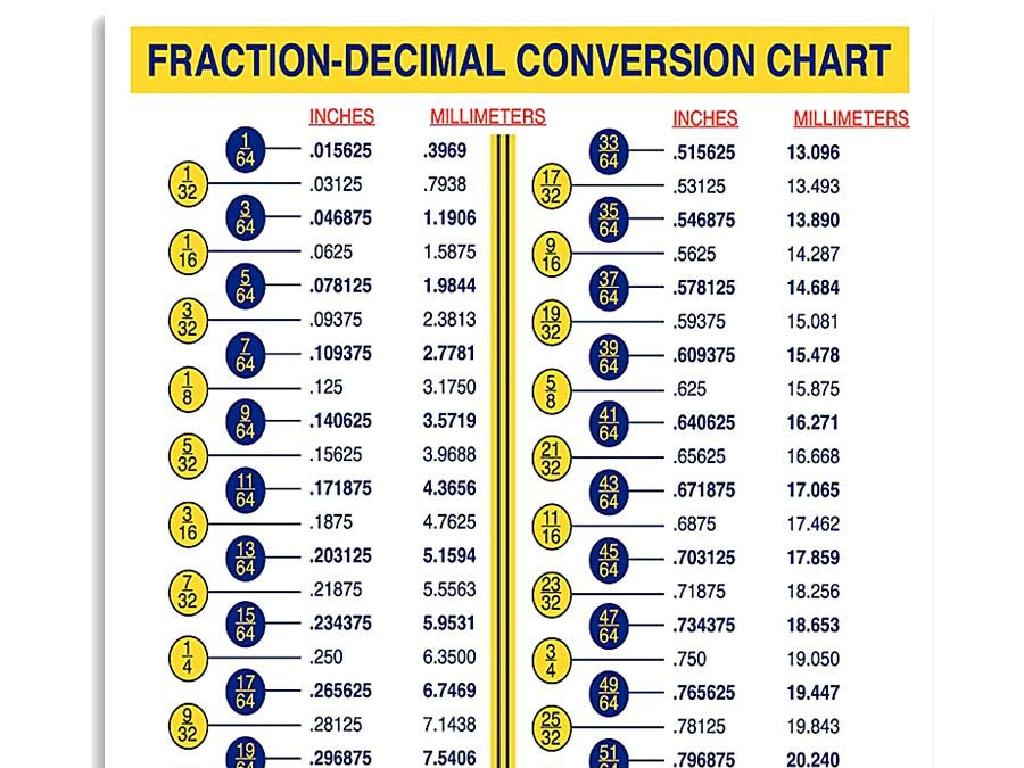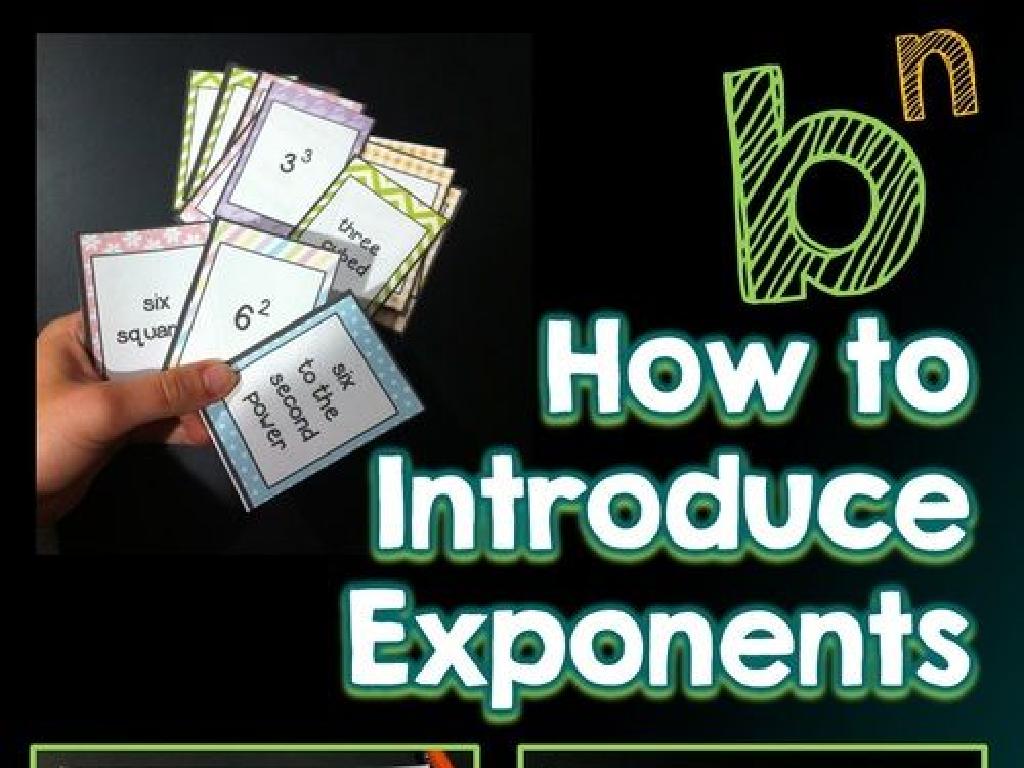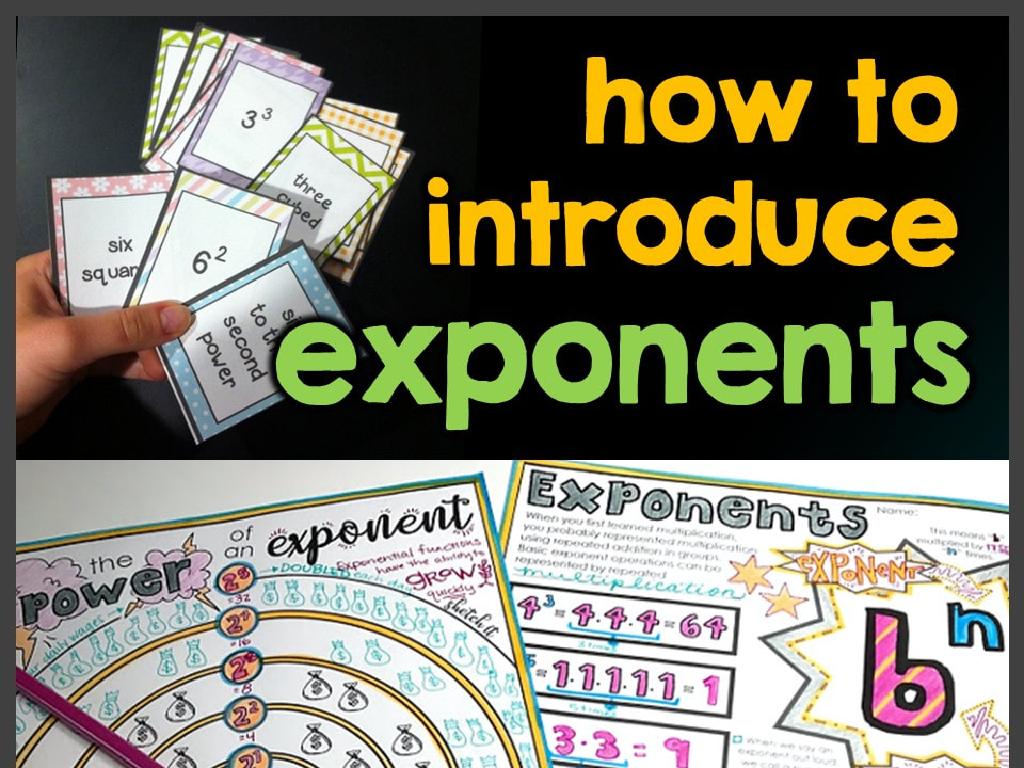Write Variable Expressions: Word Problems
Subject: Math
Grade: Fifth grade
Topic: Variable Expressions
Please LOG IN to download the presentation. Access is available to registered users only.
View More Content
Welcome to Variable Expressions!
– Math has its own language
– What are variable expressions?
– Variables represent numbers in math equations
– Variables in daily math
– Examples: saving money, tracking time
– Practice with word problems
– Solve problems using variables
|
This slide introduces students to the concept of variable expressions, a fundamental part of algebra. Start by explaining that math, like any language, has its own set of rules and vocabulary. Introduce variable expressions as a way to represent numbers with letters or symbols, which can change or vary. Provide relatable examples of variables in everyday situations, such as saving money (e.g., ‘s’ for savings) or tracking time (e.g., ‘t’ for time). Conclude by emphasizing the importance of understanding and using variable expressions to solve word problems, which will be practiced in class. Encourage students to think of variables as placeholders for unknown values that they can figure out. The next class will involve hands-on practice with word problems to apply what they’ve learned.
Understanding Variables in Math
– Define a variable
– A symbol that represents a number
– Variables as placeholders
– They hold the place for numbers we don t know yet
– Simple math problem examples
– If x is the number of apples, what is x in ‘x + 3 = 10’?
– Practice with variables
– Let’s solve problems using x, y, or other letters
|
This slide introduces the concept of variables to fifth-grade students. A variable is a fundamental element in algebra, acting as a symbol (like x or y) that stands in for a number we don’t know yet. It’s like a blank space or a placeholder in a math problem that we need to fill in. Use simple math problems to show how variables work, such as ‘x + 3 = 10’. Ask the students what number x must be for the equation to be true (x would be 7 in this case). Encourage students to practice writing and solving equations with variables for different scenarios, reinforcing the idea that variables can represent any number. This will prepare them for more complex word problems and algebraic expressions.
Understanding Variable Expressions
– Define mathematical expression
– A combination of numbers, variables, and operations
– Expressions vs. equations
– Expressions don’t have an equal sign; equations do
– Create expressions from words
– Translate a story problem into a numerical expression
– Practice with word problems
|
Begin by defining a mathematical expression as a phrase that can include numbers, variables, and operation signs but does not have an equal sign, unlike an equation. Clarify the difference between expressions and equations, emphasizing that expressions represent values that can change, while equations show a balance between two expressions. Teach students how to convert word problems into mathematical expressions, identifying keywords that indicate operations (e.g., ‘total’ for addition, ‘difference’ for subtraction). Provide examples and practice problems to help students become comfortable with creating expressions from word problems. Encourage them to think about the logical steps involved in solving a problem and how to represent these steps with variables and numbers.
Writing Expressions from Word Problems
– Converting words to math
– Key terms for expressions
– Terms like ‘sum of’, ‘product of’, ‘less than’ indicate math operations.
– Practice with expression phrases
– Write math expressions for phrases like ‘5 more than a number x’.
– Group activity: Matching game
– Work together to connect phrases with their corresponding math expressions.
|
This slide introduces students to the concept of writing variable expressions from word problems. Begin by explaining how everyday language can be translated into mathematical expressions using key terms. Highlight terms such as ‘sum of’, ‘difference’, ‘product of’, and ‘quotient of’ to illustrate addition, subtraction, multiplication, and division, respectively. Provide practice opportunities with phrases that they must turn into expressions, such as ‘the total of a number and four’ becoming ‘x + 4’. For the group activity, prepare cards with phrases on one set and expressions on another; students will work in groups to match them correctly. This interactive activity reinforces learning and encourages collaboration. Offer guidance and support as students engage with the activity, ensuring they understand the rationale behind each match.
Word Problems & Variable Expressions
– Read and understand word problems
– Grasp the story and question asked
– Identify variables in problems
– Find the unknowns that change
– Write expressions for word problems
– Use letters for unknowns, numbers for known
– Practice with examples
– Try ‘Sarah has x apples, 5 more than Bob’
|
This slide is aimed at helping fifth-grade students tackle word problems by translating them into variable expressions. Start by reading the problem carefully and understanding the scenario presented. Next, identify the variables, which are the unknown quantities in the problem. Then, write expressions using variables to represent the situation described in the word problem. For example, if Sarah has some apples and she has 5 more than Bob, we can write the expression ‘x + 5’ where ‘x’ represents the number of apples Bob has. Encourage students to practice with various examples and guide them through the process of forming expressions. This will help them develop problem-solving skills and a better understanding of algebraic concepts.
Let’s Practice Together: Variable Expressions
– Work through an example problem
– Identify the variable in the problem
– The variable represents an unknown number we’re trying to find
– Write an expression for the problem
– Use the variable to show the relationship in the problem
– Discuss different solving methods
– Share and compare how we each solved the problem
|
This slide is designed for a collaborative class activity focused on writing variable expressions from word problems. Start with a guided example, solving a word problem as a class and identifying the variable involved. Then, write an expression using that variable to represent the problem mathematically. Encourage students to discuss their thought processes and the different approaches they might take to solve the problem. This will help them understand that there can be multiple ways to approach a problem, and that discussing with peers can provide new insights. Possible activities include solving problems in small groups, using manipulatives to represent variables, or creating their own word problems for classmates to solve.
Group Activity: Crafting Word Problems
– Form small groups for problem creation
– Each group writes a unique word problem
– Swap problems with a different group
– Solve the new problem by writing an expression
– Use variables to represent unknown numbers
|
This activity is designed to foster collaboration and creativity among students while reinforcing their understanding of variable expressions. Divide the class into small groups and provide them with guidelines for creating a word problem that involves a situation where variables are needed. Once each group has created their problem, they will exchange with another group and attempt to write a variable expression to solve the new problem they received. This exercise will help students practice translating real-world situations into mathematical expressions and see how their peers approach problem-solving. As a teacher, circulate the room to provide assistance and ensure that the word problems are appropriate for the grade level. Possible activities could include problems related to saving money, comparing distances, or calculating total costs of items.
Review and Reflect: Variable Expressions
– Recap of today’s lesson
– We learned how to write and solve variable expressions.
– Variable expressions in daily life
– Imagine using variables for savings, recipes, or trips.
– Share an interesting takeaway
– Maybe a word problem or the idea of variables was intriguing.
– Reflect on the learning process
|
As we conclude today’s lesson on variable expressions, it’s important to review the key concepts we’ve covered. Encourage students to think about how variable expressions apply to real-world scenarios, such as budgeting their allowance or adjusting a recipe. Ask each student to share one aspect of the lesson that they found particularly interesting or challenging. This reflection helps reinforce their understanding and allows you to gauge their engagement with the material. For the next class, consider preparing a few real-life word problems that students can solve using variable expressions to further solidify their learning.
Class Activity: Expression Scavenger Hunt
– Find objects in the classroom
– Write a math expression for each
– For example, if you find 4 pencils, write ‘4p’ for 4 times the number of pencils
– Present your expressions
– Explain how you created the expression
– Discuss with classmates
– Share different expressions and learn from each other
|
This activity is designed to help students apply their understanding of variable expressions in a fun and interactive way. Students will search for objects around the classroom and then write a mathematical expression for each item found. For instance, if a student finds 5 books, they might write ‘5b’ where ‘b’ represents the number of books. After writing expressions, students will present their findings to the class, explaining their thought process. Encourage students to be creative with their expressions and to discuss the different expressions they and their classmates come up with. This will foster a deeper understanding of how variable expressions can represent real-world scenarios. Provide guidance and examples to ensure clarity and understanding.

